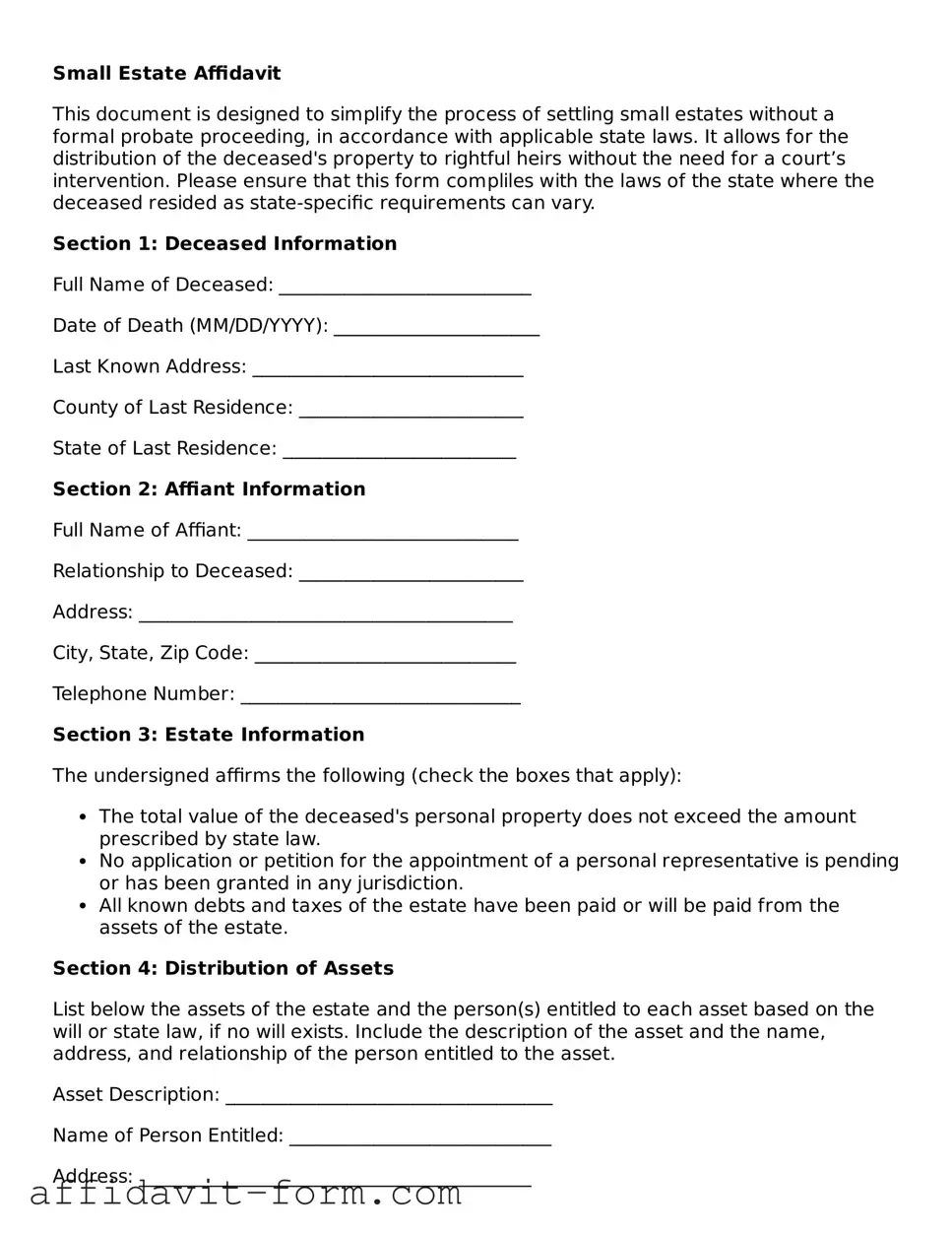Small Estate Affidavit
This document is designed to simplify the process of settling small estates without a formal probate proceeding, in accordance with applicable state laws. It allows for the distribution of the deceased's property to rightful heirs without the need for a court’s intervention. Please ensure that this form compliles with the laws of the state where the deceased resided as state-specific requirements can vary.
Section 1: Deceased Information
Full Name of Deceased: ___________________________
Date of Death (MM/DD/YYYY): ______________________
Last Known Address: _____________________________
County of Last Residence: ________________________
State of Last Residence: _________________________
Section 2: Affiant Information
Full Name of Affiant: _____________________________
Relationship to Deceased: ________________________
Address: ________________________________________
City, State, Zip Code: ____________________________
Telephone Number: ______________________________
Section 3: Estate Information
The undersigned affirms the following (check the boxes that apply):
- The total value of the deceased's personal property does not exceed the amount prescribed by state law.
- No application or petition for the appointment of a personal representative is pending or has been granted in any jurisdiction.
- All known debts and taxes of the estate have been paid or will be paid from the assets of the estate.
Section 4: Distribution of Assets
List below the assets of the estate and the person(s) entitled to each asset based on the will or state law, if no will exists. Include the description of the asset and the name, address, and relationship of the person entitled to the asset.
Asset Description: ___________________________________
Name of Person Entitled: ____________________________
Address: __________________________________________
Relationship: _____________________________________
Additional Assets and Persons Entitled:
- ________________________________________________
- ________________________________________________
- ________________________________________________
Section 5: Affidavit
I, [Affiant's Name], under penalty of perjury, declare that the statements made in this affidavit are true and correct to the best of my knowledge and belief. I understand that false statements made herein are subject to penalties for perjury.
Date: _______________
Signature: ___________
State of ____________
County of ___________
Subscribed and affirmed before me this ___ day of ___________, 20__.
Notary Public: ________________________________
My commission expires: _________________________
